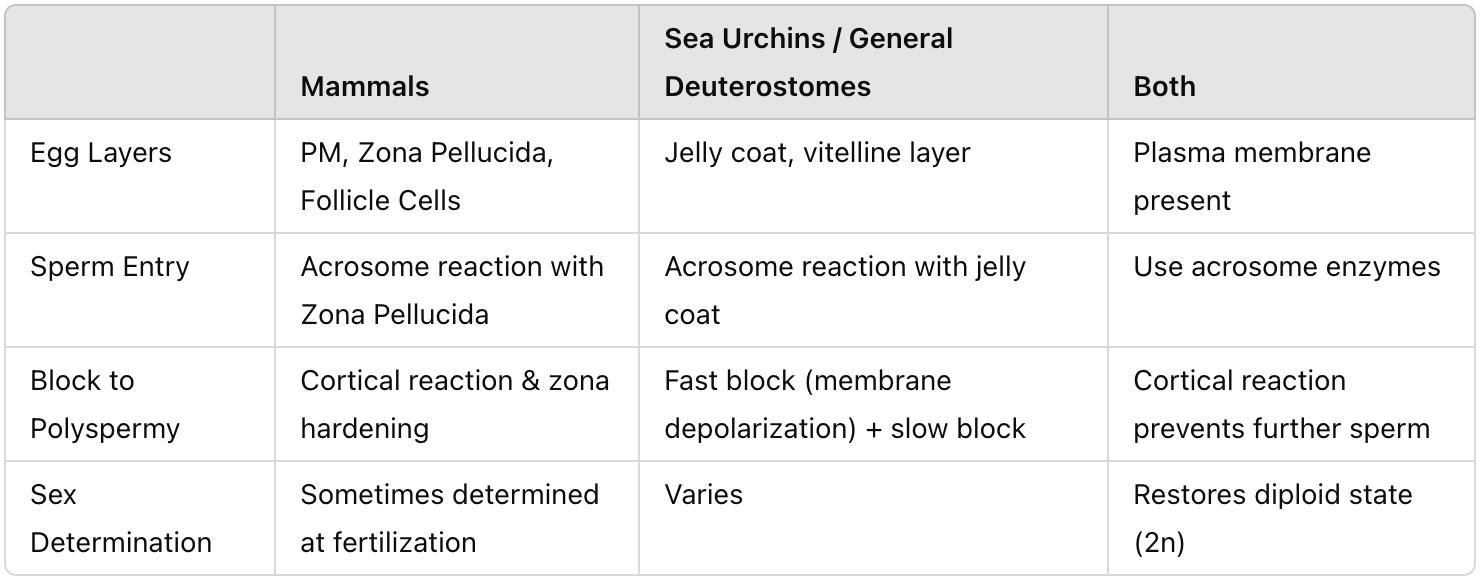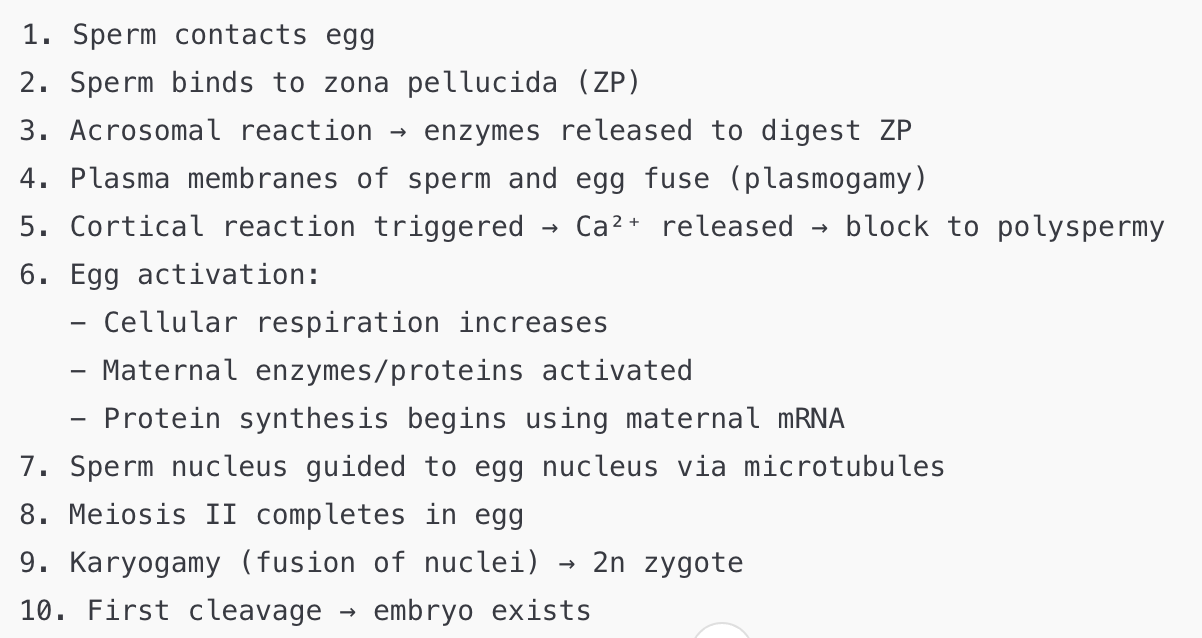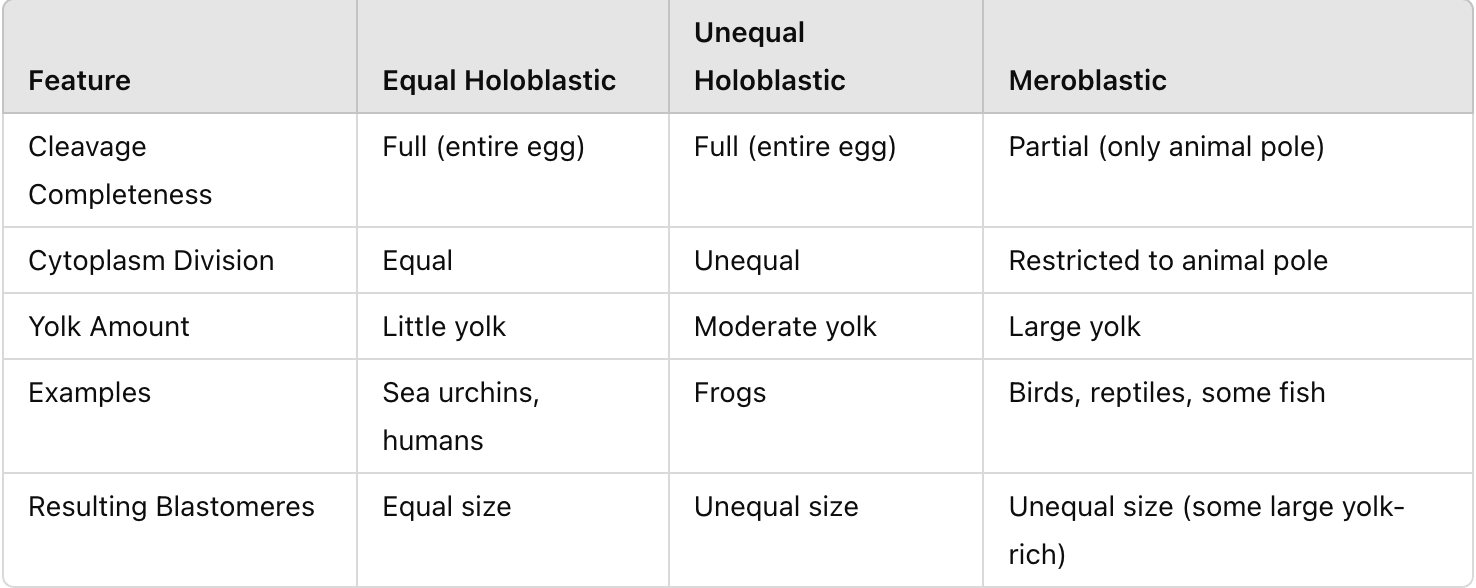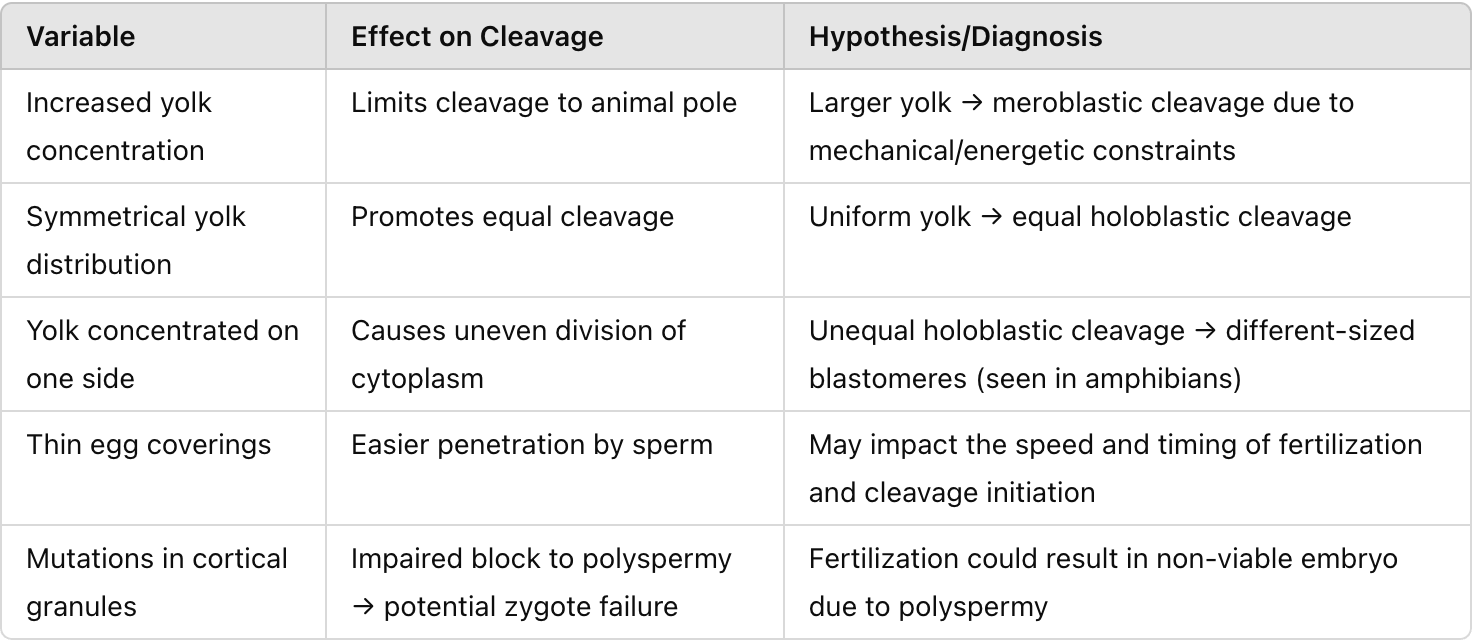Topic 14- Development 1
Outcomes:
• sequence animal development

• compare and contrast fertilization in different animals

• sequence the process of fertilization

• sequence the process of cleavage

• compare and contrast cleavage patterns

• hypothesize and diagnose the impact of variability on cleavage patterns

I. Introduction
A. Development
Development refers to all changes that occur during an organism’s lifetime.
B. Model Organism
Deuterostome development: A developmental mode in animals where the blastopore becomes the anus.
C. Ongoing Process
The egg has a plasma membrane and outer coverings that:
Protect it from environmental factors.
Facilitate the exchange of nutrients and waste during early development.
Mechanisms like gametic isolation and prevention of polyspermy ensure successful fertilization.
II. Fertilization
A. Introduction
Fertilization = n (sperm) + n (egg) → 2n (zygote)
Key outcomes of fertilization:
Restores diploid (2n) ploidy.
Sometimes determines sex.
Activates the egg and begins embryonic development.
Begins with sperm contacting the egg:
Acrosome reaction: Enzymes released from the sperm’s acrosome break down the zona pellucida (ZP).
Plasmogamy: Fusion of egg and sperm plasma membranes.
Cortical reaction and slow block to polyspermy prevent additional sperm from entering.
Egg activation begins.
Karyogamy: Fusion of egg and sperm nuclei → zygote.
Ends with first cleavage → embryo now exists.
B. Fertilization in Mammals
1. Structures Around Egg
Plasma membrane (PM)
Zona pellucida (ZP)
Follicle cells
2. Vocabulary
Acrosome: Packet of enzymes in sperm head.
Cortical granules: Vesicles in egg that release enzymes during cortical reaction.
Polyspermy: Fertilization by more than one sperm.
3. Process Details
Sperm binding to ZP triggers acrosomal reaction.
Enzymes from the acrosome dissolve outer layers of the egg.
Sperm fuses with egg plasma membrane (plasmogamy).
Cortical reaction: Calcium ions are released from the smooth ER into the cytoplasm.
This triggers cortical granules to release enzymes.
These enzymes modify the ZP to prevent more sperm entry (slow block to polyspermy).
C. Egg Activation
Triggered by rise in intracellular Ca²⁺ levels.
Leads to:
Increased cellular respiration.
Activation of maternal enzymes and proteins.
Protein synthesis using existing maternal mRNA.
After a few hours:
Sperm nucleus is guided to egg nucleus via microtubules.
Meiosis II completes in egg (oogenesis).
Karyogamy results in a diploid, totipotent zygote.
III. Cleavage
A. Introduction
Single-cell zygote undergoes rapid mitotic divisions to form the embryo.
Characterized by:
No G₁ or G₂ phases.
No cell growth or protein synthesis.
B. Stages of Cleavage
Zygote (2n) – single cell.
Embryo (2n) – 2 or more cells.
Blastula (2n) – hollow ball of ~128 blastomeres.
Cells produced are identical via mitosis (indeterminate cleavage).
Cleavage furrow: Indentation during cytokinesis in the animal hemisphere.
Animal pole: Develops into the embryo.
Vegetal pole: Contains yolk.
C. Cleavage Patterns
1. Equal Holoblastic
Cleavage furrow passes entirely through the egg.
Equal division of cytoplasm → equal blastomeres.
Occurs in eggs with little yolk (e.g., sea urchins, humans).
2. Unequal Holoblastic
Cleavage furrow passes entirely through egg but off-center.
Unequal division of cytoplasm → unequal blastomeres.
Occurs with moderate yolk (e.g., frogs).
3. Meroblastic
Cleavage furrow does not fully pass through egg.
Cleavage only occurs in animal pole.
Occurs with large yolk (e.g., birds, reptiles, some fish).